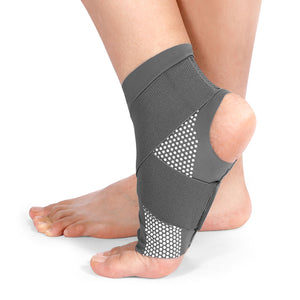How Many Hours Should You Wear a Back Brace for Pain

4-6 hours per day, depending on your condition, to avoid muscle dependence. Segmenting the wearing time is better, such as taking a 10-15 minute break every 2 hours to avoid prolonged immobilization. Moderate muscle activity and adjustments based on a doctor's advice can help ensure both support and recovery.
When to Wear
The timing is very important when considering wearing a back brace for pain. Generally, are worn at times when extra support may be required: for example, sitting for extended periods, lifting heavy objects, or any activity that puts great stress on the spine. If you have chronic pain, these high-stress situations can be managed by wearing the brace to effectively alleviate pain and reduce further muscle damage.
In the case of post-surgery patients or those who require spinal correction, a more routine pattern for brace wear may be followed: a physician could advise wearing it right after waking up in the morning to make sure the body maintains good posture and supports the spine. Normally, the brace should be taken off when you are ready for bed, allowing your back muscles to relax naturally.
Different scenarios call for different types of braces. While soft braces will provide only light support and are thus not too controlling, rigid braces are designed for more serious ailments, recovery from operations, or injury complications. Before use, it is very critical to understand one's needs to avoid any mistake of wearing the wrong type of brace at the wrong time.
Daily Time Limit
Duration is the most important thing about wearing a back brace. A wearing duration of 4-6 hours a day can be recommended for most people, which is enough to relieve pressure on the back but not too much to avoid over-dependence of muscles. If you are a fresh user, you start with 2-3 hours and increase the time according to the requirement and convenience.
It is important to note that wearing a brace for an extended period may negatively affect your muscles. Back braces are designed to temporarily reduce spinal pressure, but overuse may weaken the core muscle groups due to lack of exercise. Therefore, while wearing the brace daily, it's essential to incorporate simple exercises or stretches to maintain muscle strength and balance.
Daily brace use should be segmented. For instance, one can use it for some time at work and remove it during breaks to give your back a chance to get used to the normal muscle load. Continuous use over a long period of time might have an opposite effect and increase back fatigue and stiffness.

Best Practices
Proper use of the back brace can significantly enhance effectiveness and reduce issues that may result from improper wear. First, one needs to choose the right kind of brace: a brace is supposed to be tailored or chosen according to your body size, the location of your pain, and your specific needs. A brace that is too tight can constrict blood flow and cause discomfort, while a loose one will not be able to provide enough support, reducing its effectiveness.
When wearing a brace, make sure it is correctly positioned. The brace's primary area of support should be aligned over the . Once it has been donned, check that it enables normal movement without slipping or causing excessive compression. Each day, before donning, always check the brace for cleanliness and integrity to avoid skin irritation caused by possible damage or contamination.
Besides wearing techniques, developing good daily habits will also contribute to effectiveness. Keep the good sitting and standing posture and avoid sitting or standing for long without activities; combine these habits with doctor-recommended back exercises to make your back healthier. The brace itself is just an auxiliary tool; real improvement comes from scientific methods to address back problems.
Signs to Adjust
Paying attention to how your body reacts to the back brace is an important thing. If the brace feels too tightly fitted at certain areas, thus leaving some pressure marks or discomfort on the skin, it's a sign that adjustments are called for. Adjust the tightness of the brace so that it is firm enough to give stability but without too much pressure on the skin.
If at any time you feel localized numbness or tingling while in the brace, this could be a sign of nerve or blood vessel compression. Immediately stop use of the brace and review its position and fit. Also, if the brace increases your pain rather than alleviating it, the brace is either not appropriate in size or type and should be replaced.
Another situation is when the brace becomes loose or fails to stay in place after some use. This can be because of the wear and tear of the brace, or it might be badly adjusted. It calls for an immediate expert opinion for reassessment or replacement.
For Chronic Pain
For patients with chronic back pain, this full back brace should be a helpful daily aid but not a dependency. The causes of chronic pain often involve issues like muscle fatigue, inflammation, or structural problems; thus, the role of the brace would be to offer temporary relief, support, and improvement in posture, since it cannot directly treat the cause.
Wear the brace when performing activities that are likely to aggravate your lower back pain, such as sitting for long periods at work, driving, or even light exercise. The orthotic provides a level of relief by lessening strain on the back; however, one must be cautious of dependence and continually work toward general muscle strengthening, particularly about core muscle groups.
Moreover, chronic pain patients should combine other therapies such as physical therapy, acupuncture, or medication. The brace is part of comprehensive management only, and only the multifaceted approach can relieve chronic pain effectively.
Short-Term Relief
For such sudden back pain-like strains during exercise or acute pain due to poor posture-a back brace can help only for . In this respect, the nature of functions is one of stabilization of the back so that further secondary injury can be reduced and the muscles and soft tissues around it start recovering.
You can adjust how many hours you wear it depending on the degree of pain for short-term use. For example, the first couple of days of sharp pain, 4-6 hours a day will do. Reduce that time as the symptoms die down. Adding local heat therapy, anti-inflammatory ointments, or physical therapy will increase its efficacy.
If the pain does not get better within one week or gets worse, one should seek immediate medical help. This could also point to an underlying severe problem, such as a herniated disc or an injured ligament, which cannot be sorted out with a brace.
Doctor's Advice
A doctor's advice is the most important reference, whether for short-term pains or chronic conditions. Since everyone's back health condition is different, the choice of brace, wearing time, and recovery methods should be personalized. In cases of discomfort or lack of improvement, consult the doctor promptly if you use a brace.
Doctors typically evaluate your condition to determine if a brace is necessary and which type is most suitable for you. Postoperative patients may require rigid braces to stabilize the spine, while those with mild pain may benefit from soft braces to correct posture. Doctors also provide guidance on proper wearing time to prevent muscle degeneration or dependence caused by overuse.
They might also recommend complementary therapies that include core muscle training, posture correction, or specific programs of physical therapy. A back brace is only an auxiliary tool, and the ultimate goal is to eventually lead your back to its natural healthy state














